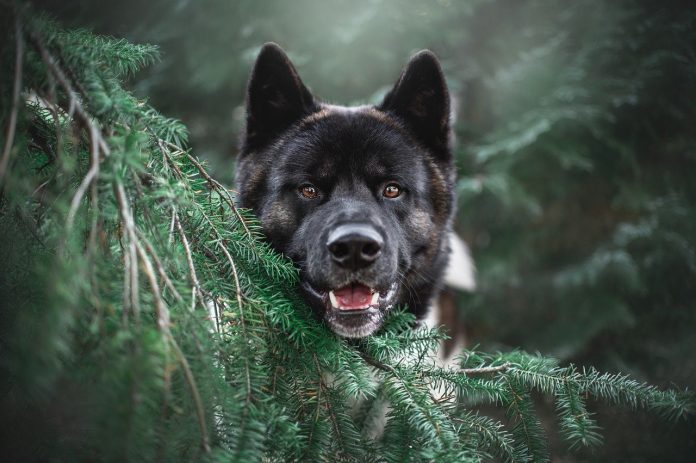Table of Contents
Harvest mites are also known as red bugs, trombiculid mites, scrub-itch mites, and berry bugs are especially active in autumn, and in their larval stage, these so-called chiggers spread quickly in forests and grasslands.
So, while you take your dog for a walk in your nearby park, they can attach themselves to them as they do to various animals they encounter. The larvae of these organisms follow a parasitic pattern of nutrition. The larvae are active during the day, especially in dry, sunny weather in late August or September.
Harvest mites can be found in berry patches, tall grass, weeds, wooded areas, pine straw, leaves, and bark or mulch. For that reason, dog owners are advised to stay away from such areas while taking their pet dog for a walk in autumn.
However hard you may try to avoid grass mites on dogs you may still find your dog carrying them. Ensure to look out for the following signs and act as soon as possible to keep your dog healthy.
How to spot Harvest Mites?
These six-legged creatures can be seen by the naked eye with a closer look. However, the larva is microscopic in nature. Since they are bright orange in color, you can easily spot them in your dog’s fur. Harvest mites in dogs are normally found in clusters and in areas where they can’t be seen easily, such as:
- The pocket of the ear flap normally known as Henry’s pocket
- In between the toes
- Above the webbing of the toes
- Around the nipples
- Folds of elbows and the chest
You can assume a harvest mite infection if your pet starts to scratch themselves more frequently than usual if they don’t have a history of any sort of skin infection, especially if it’s around autumn and after a walk in the woods. If you find these kinds of issues or orange spots, it is advisable to go to the vet rather than trying home treatments first.
What do Harvest Mites do to Dogs?
 The harvest mite larvae do not burrow deep into the skin and live underneath. These are just misconceptions. The larvae actually live on the surface of the skin, where they inject powerful enzymes through their small, hooked fangs that liquefy and consume the skin cells. This would result in skin lesions that vary from crusted spots, areas of hair loss, to raw and bleeding areas. In dogs, grass mites are mostly found around the ears and between the toes but can be found almost anywhere on the body.
The harvest mite larvae do not burrow deep into the skin and live underneath. These are just misconceptions. The larvae actually live on the surface of the skin, where they inject powerful enzymes through their small, hooked fangs that liquefy and consume the skin cells. This would result in skin lesions that vary from crusted spots, areas of hair loss, to raw and bleeding areas. In dogs, grass mites are mostly found around the ears and between the toes but can be found almost anywhere on the body.
Is your Dog at Risk?
If you see your dog scratching after having been near berry patches, tall grass, weeds, wooded areas, pine straw, leaves, and bark or mulch, then you can expect that your dog is infected with harvest mites. But to fully confirm it, you should take them to your vet.
It is highly common for dogs to catch harvest mites, especially during autumn, as this is the most suitable weather for their growth. Staying away from the mentioned hotspots and walking in the early morning when it is still cool can help to reduce the risk of a grass mites’ infection.
Do Harvest Mites Pose any Danger?
The harvest mite infestation causes the same irritation as a flea infestation. The worrying factor is that harvest mites are potentially linked to Seasonal Canine Illness (SCI), but this is yet to be confirmed. This is a serious condition that occurs during the autumn months. At certain times this has been fatal. Most of the experts suggest that this is mainly due to harvest mites. But this fact has not been fully proven to date.
Diagnosis of Harvest Mites in Dogs
If you notice your dog scratching more often than usual and particularly in the areas highlighted here common for harvest mite’s infections, or if you spot little orange dots on them, don’t think twice and book an appointment with your vet. The vet would be able to confirm if it is grass mites that are affecting your dog.
Best Treatments of Harvest Mites in Dogs
 Once the vet has confirmed a harvest mites’ infection, you can do the following:
Once the vet has confirmed a harvest mites’ infection, you can do the following:
- Dogs that are suffering from harvest mite bites should be given medication to soothe the irritation and reduce inflammation, which the vet will provide or prescribe.
- Give your dog a bath using a shampoo that would ease the itchy feeling. After drying your dog, you can apply either a topical ointment or spray to kill the remaining harvest mites.
- At times, veterinarians would recommend Frontline Spray to be applied to the affected areas. They are used for flea prevention. Even though topical drops are useful, not all can provide the benefits of Frontline Spray.
- A corticosteroid would alleviate the itching and lessen the inflammation produced by the mites.
- In extreme cases, antibiotics would be prescribed after a thorough body scan and body swab tests.
Final Thoughts
Autumn season is the high season for harvest mites and any dog owner or dog keeper should be mindful of the precautions listed in this article to keep their dog healthy. Think twice about where you take your dog and avoid the mentioned areas where possible. If your dog still happens to catch grass mites, follow the treatment steps highlighted here and consult a veterinarian.


